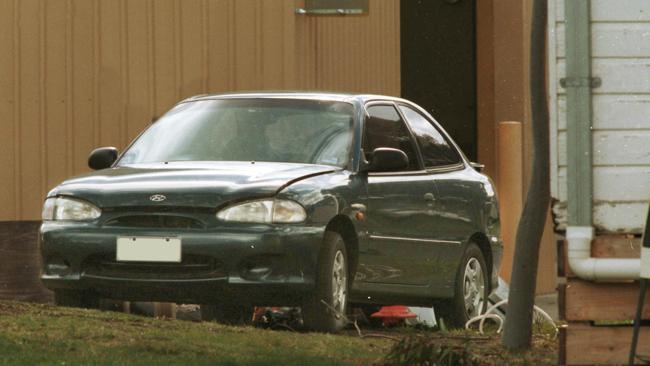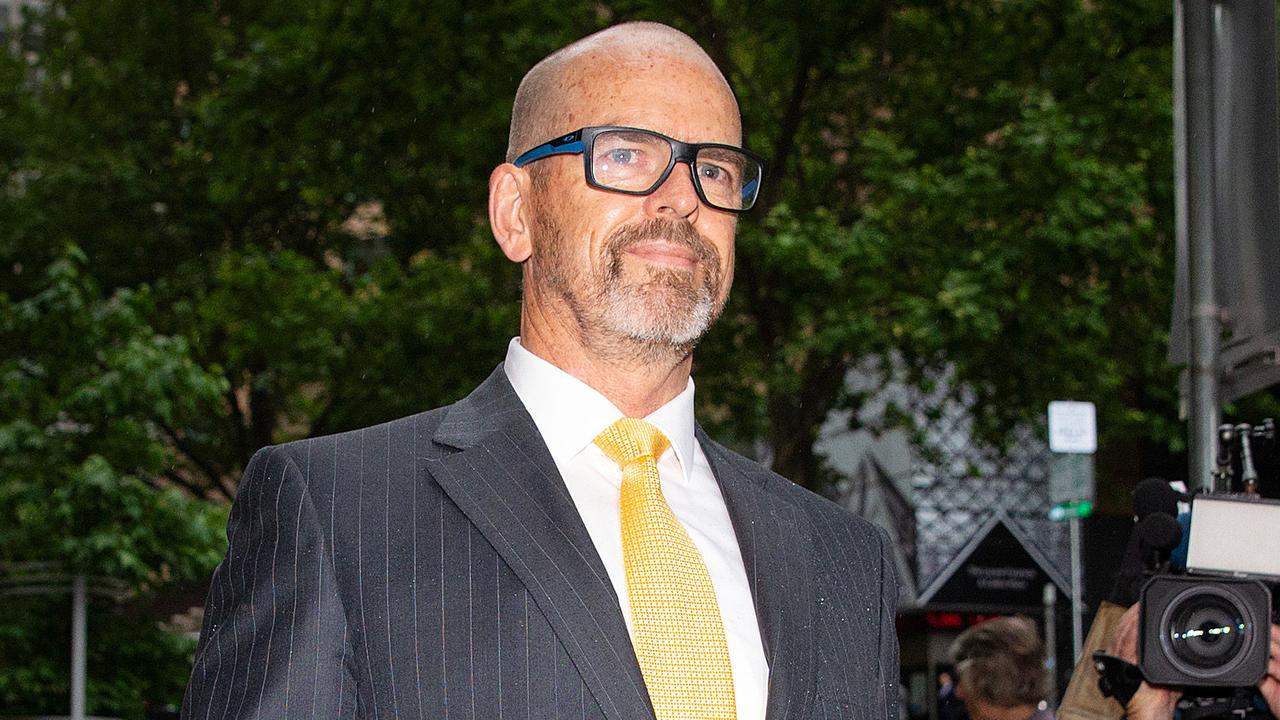Tiny pieces of evidence led to Bandali Debs, killer of officers Sgt Gary Silk and Sen-Constable Rod Miller
SPECIAL: THE smallest piece of evidence can lead to a killer. Elissa Hunt follows the trail to Bandali Debs, 15 years after the notorious Silk-Miller murders.

True Crime Scene
Don't miss out on the headlines from True Crime Scene. Followed categories will be added to My News.
SOMETIMES the smallest grain of evidence yields a fertile field of clues for murder investigators.
In a busy industrial road in suburban Moorabbin on August 16, 1998, it was tiny fragments of shattered glass found several metres in front of a parked, unmarked police car that provided that vital breakthrough.
The police car had been driven by Sgt Gary Silk and Sen-Constable Rod Miller seconds before they were shot dead.
One of the glass fragments came from another vehicle and bore the letter "H".
The manager of the Moorabbin branch of Windscreens O'Brien, David Albers, was called to the Cochranes Rd scene at 11.20am.
CHARLIE BEZZINA: Death of a cop hurts us all
The glass, he believed, was Korean, maybe from a Hyundai or a Kia.
The glass was collected and forensic scientist Peter Ross flew to Korea to check it with the Hyundai Motor Company and their windscreen supplier in October, 1998.
The glass was identified as coming from the rear windscreen of a Hyundai Excel X3 model, manufactured in February, 1997.
ALWAYS REMEMBERED: Charity match for fallen officers
Those screens were fitted to cars built in March, and early April 1997.
There were plenty of cars fitting the profile scattered across Australia, and Lorimer taskforce detectives working on the case needed to check every one.
In one of Australia's biggest car hunts, Hyundais that were registered, unregistered, interstate, stolen, burnt-out or smashed were tested.
IN the days after the murders of officers Silk and Miller, suppliers had been urged to call police if anyone replaced a rear windscreen on a Hyundai.
It was in late August, 1998 that an employee at Grant Walker Parts World in Bayswater received a call from a woman wanting just that.
The salesman remembered the woman and a young man calling by later that day to collect the windscreen.
They were driving a white Mazda and paid cash for the screen, which cost almost $300.
He said he had asked the couple how the glass had been broken.
The young man had allegedly replied: "Someone smashed the glass and stole the subwoofer."
The employee then called police, who determined that the white Mazda belonged to a Joanne Debs.
The following day, police drove past the Debs' family home in Narre Warren and noticed Joanne's sister, Nicole Debs, and her boyfriend, Jason Joseph Roberts, 21, cleaning a dark-coloured Hyundai.
Police said Nicole Debs at first denied the windscreen had been replaced, but later told them her father had broken it at work.
Her father, 48-year-old Bandali Michael Debs, said he had smashed the glass by accident after closing the rear tail gate on some metal strips.
HE had replaced it himself to save a little money, he told the investigators.
In December, 1998, police again spoke to Debs and took the Hyundai away to be forensically examined.
Two of more than 50 glass fragments that were found inside it were analysed and found to be similar to the shards found at the crime scene.
But it was concluded from those two samples that the car, OJI 862, was unlikely to have been the source of the glass at Cochranes Rd.
Lorimer police announced the hunt for the killer's Hyundai was being called off after an unsuccessful search of more than 2000 vehicles.
They had been secretly listening to several suspects for six months before making the public announcement.
Then the taskforce released a face image of a young man they said was the prime suspect.
It was an altered picture of apprentice builder Roberts, taken from his driving licence.
He immediately went to the police to make a statement.
A week later, he and Debs were arrested in dawn raids in Narre Warren and Cranbourne.
Nicole's Hyundai was seized again.
The preliminary hearing for the men saw a legion of civilian, police and expert witnesses being cross-examined at Melbourne Magistrates' Court over 29 days.
Both Roberts, of Merrijig Drive, Cranbourne, and Debs, of Springfield Drive, Narre Warren, maintained that they were innocent.
Forensic scientist Peter Ross gave evidence that he re-examined the glass from the Debs' car in December, 1999, a year after it was first seized and tested.
He found almost all of the pieces were indistinguishable from the shattered glass found in Cochranes Rd.
The glass from the scene was also indistinguishable from fragments he found on Sen-Constable Miller's jacket and jeans.
Prosecutor Jeremy Rapke, QC, had opened the case, saying the glass was left on the road when the men fired at Sen-Constable Miller through the rear windscreen.
Police sought and got a Supreme Court warrant to listen in on Debs and Roberts from December 11, 1999.
Less than two weeks later, they allegedly overheard Debs tell Roberts he had seen "our friends", meaning the slain officers, on a reward poster at Mooroolbark police station.
During the next seven months, the pair talked about the Lorimer investigation, planning robberies and planting a bomb under a police car to watch the fireworks, Mr Rapke said.
On February 11, 2000, Debs was recorded telling his daughter Joanne of his fears that police were investigating him.
Mr Rapke told the court Debs had said jewellery stolen in armed robberies was hidden at his mother's Sydney home. There were also several guns.
Debs suggested killing two police on the other side of the city, to make the investigation "go stupid", and fleeing the scene using back roads to avoid being traced through CityLink's E-tag system.
He had also suggested to Joanne that he should kill Sen-Constable Miller's wife and baby to make the murders seem drug-related.
Defence counsel for both men argued the sound quality was poor on many of the conversations, and it was unlikely a murder trial jury would ever hear them.
They were wrong - although by the time it got to trial, only about six hours of the 20,000-odd hours of recordings were to be played to the jury.
Some, including the discussion about killing Sen-Constable Miller's family, were ruled too prejudicial.
But what the jury did hear was convincing enough.
They convicted Debs and Roberts of murder on New Year's Eve 2002, after a four-month trial.
###


